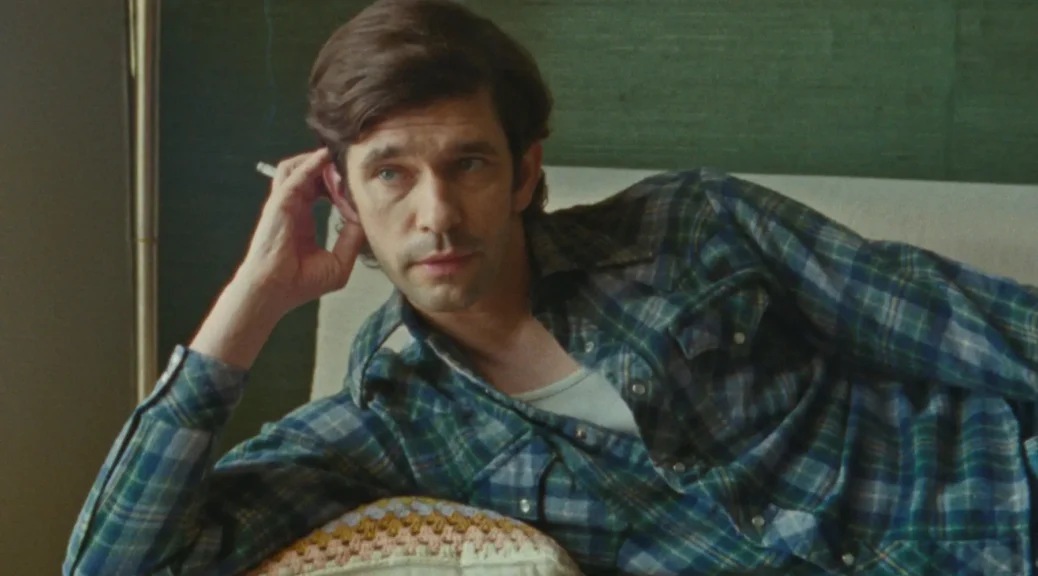Peter Hujar’s Day
by Hope Madden
Linda Rosenkranz blurred lines between fiction and nonfiction, turning conversation into a microcosm of Chelsea Hotel-orbiting 1970s society. Peter Hujar—one artist in that orbit—provided photographic evidence of the same.
Writer/director Ira Sachs attempts to trap that same lightning on screen with Peter Hujar’s Day. Sachs adapts a transcript, part of a planned book by Rosenkrantz in which her artist friends simply dictated, in detail, every event of the previous day. We catch Peter Hujar on December 18, 1974.
Ben Whishaw is Hujar, dutifully detailing his previous day to a prodding, intimate Rosenkranz (Rebecca Hall). Theirs are the only faces you see, the only voices you hear, for the film’s brisk 75-minute run time.
The two fall into a delightfully familiar chemistry, Linda a little protective, Peter a tad vulnerable, but certainly committed. Every detail—from sleeping through his alarm and being awakened by a phone call, through all the phone calls, naps, liverwurst sandwiches, right up until being awakened in the middle of the night by the prostitutes talking business under his window—is recounted.
Faithful to the tone of Rosenkranz’s body of work, Sachs spotlights the fiction structuring the nonfiction, blurring lines while drawing attention to them. The banality of the exercise—forcing himself to remember every forgettable detail of a day—strips the conversation of ego or pretention, unveiling introspection and struggle.
Whishaw is exceptional, the rote and self-consciousness at the beginning of the conversation evolving into self-effacing humor and, eventually, raw bursts of personal reflection touched by lilting melancholy.
Hall is a gift in this role, the personification of the absolute joy in simply giving your attention, listening and being with a person.
Set design and cinematography befit not just the time period but the portraiture Hujar is known for. Sachs captures kindship and camaraderie among artists.
Peter Hujar’s Day is a peek inside a lost and treasured time, an era of punk rock artistic and literary revolution. It’s also a bittersweet dance with an artist underappreciated in his time, whose work and words pack a punch 50 years on.

